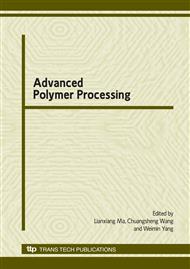p.351
p.357
p.363
p.369
p.375
p.381
p.387
p.393
p.398
CAE Analysis of the Big-Size Injection Mold of Rear Bumper
Abstract:
The MPI/Cool analysis module is used to simulate and analyze the cooling system of the car’s bumper. After improvement, a comparably reasonable cooling system is designed. The situation of curling and warping of the formed bumper parts is simulated and analyzed through the MPI/Warp analysis module, the cause of the excessive warpage in the formed parts is found out and relative solutions are put forward. The forming technology of injection mold is optimized and the problem of excessive warpage is resolved.
Info:
Periodical:
Pages:
375-380
Citation:
Online since:
December 2009
Authors:
Keywords:
Price:
Сopyright:
© 2010 Trans Tech Publications Ltd. All Rights Reserved
Share:
Citation:


